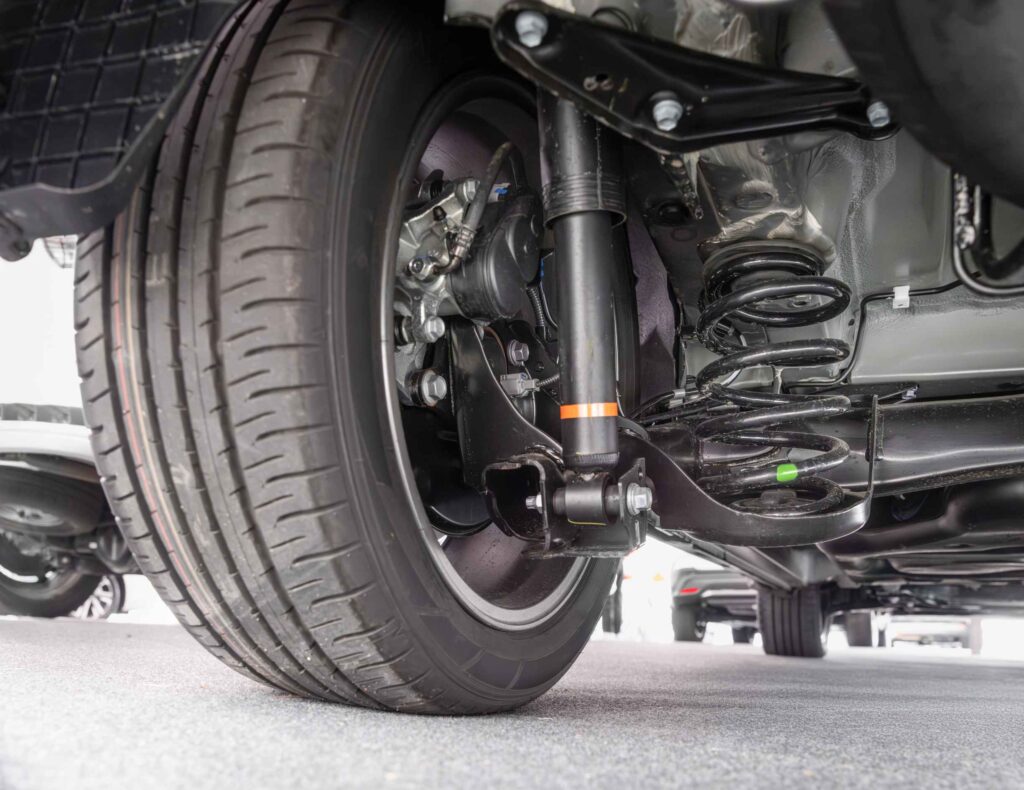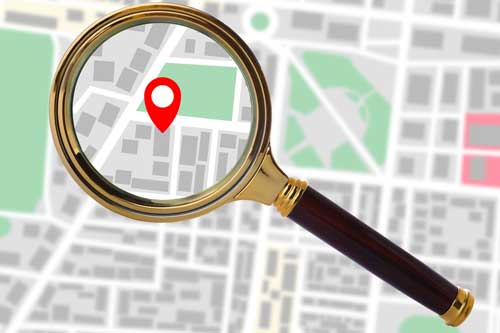Why Is My Car Leaning to One Side? Causes & Fixes
If your car is noticeably leaning to one side when parked or pulling that way while driving, don’t ignore it. This seemingly small issue can signal serious problems with suspension, alignment, or tire pressure—and it’s putting you and your vehicle at risk. In this post, we unpack the top causes, how to diagnose them, and what to do to correct it—all while helping you keep your car safe, smooth, and reliable.

What Does “Car Leaning to One Side” Actually Mean?
When a vehicle leans to one side, you may notice:
-
One corner (often a front wheel) visibly lower than the opposite side.
-
A consistent pull to the left or right while driving.
-
Handling issues or a sense of instability.
This usually points to an imbalance in suspension or wheel setup, and the root cause often falls into one of these categories:
Common Culprits Behind a Car Lean
1 — Faulty Springs or Shock Absorbers
Springs maintain your car’s ride height, while shocks/dampers control bouncing. If one side’s spring is sagging or a shock is worn out, the car settles unevenly.
Indicators You’re Experiencing This:
-
Vehicle tilts noticeably on one side.
-
Bouncy or rough ride over bumps.
-
Strange noises like creaking or clunking when cornering or braking.
👉 Fix: Diagnose worn springs/shocks by inspecting both sides. Replace any damaged components. Always replace in axle pairs for balanced handling.
2 — Improper Wheel Alignment
Misalignment—often from hitting potholes, curbs, or after accidents—can nudge your car to drift one way.
Look Out For:
-
Steering wheel feels offset or pulls while driving straight.
-
Irregular tire tread wear.
-
Steering wheel off-center.
👉 Fix: A full four‑wheel alignment at a reputable workshop corrects camber, toe, and caster, rebalancing your ride.
3 — Worn Suspension Bushings or Ball Joints
Bushings cushion and stabilize suspension parts. When worn or cracked, sudden shifts in suspension geometry may tilt your car.
Signs of Worn Parts:
-
Clunking or knocking noises over bumps.
-
Loose feel in steering.
-
Uneven ride height measurements left vs right.
👉 Fix: Inspect bushings, control arms, and ball joints. Replace any worn components following manufacturer specs for your car model.
4 — Unequal Tire Pressure
This one’s simple yet often overlooked—driving with underinflated tires on one side can tilt your ride.
✅ Quick Check: Measure tire pressures with a gauge and adjust to manufacturer recommendations.
A small breeze bump might be all you need to fix it. If lean persists, dig deeper.
5 — Uneven Brake Drag
A stuck caliper or seized brake can pull one side of the car down and cause a subtle pull when driving.
Symptoms Include:
-
Car pulling to one side when braking or even coasting.
-
Heat or odor near the concerned wheel.
-
Premature brake wear on one side.
👉 Fix: Inspect caliper and brake pads. Cle an sticky pistons, lubricate slides, or replace faulty components.
6 — Structural Body or Frame Damage
Although rare, accidents or off-roading can damage frame rails or suspension tower, making one side lower.
How to Spot It:
-
Panel gaps misaligned.
-
Visible frame bends under the hood or trunk.
-
Issues persisting even after suspension repair.
👉 Fix: A collision repair shop with a frame rack can straighten the chassis. After that, redo suspension and alignment.
How to Diagnose the Lean
Follow this step‑by‑step checklist to pinpoint the issue:
-
Visual inspection (flat, level ground): Image the gaps at wheel openings. Compare left vs right front and rear.
-
Check tire pressure: Use a gauge and inflate to recommended PSI (see placard inside driver’s door or owner’s manual).
-
Bounce test: Push down firmly on each corner. Does one side bounce more than others? That indicates worn shocks or springs.
-
Inspect for fluid leaks: Look around shocks and struts for leaking oil or worn/damaged boots.
-
Observe steering/handling: Does the steering wheel pull off-center? Do you drift when braking?
-
Listen for odd noises: Clunks, squeaks, or groans when turning or going over bumps suggest worn suspension components.
-
Professional alignment check: A trusted shop can measure angles and spot camber/toe/caster issues. They’ll generate a report.
-
Suspension teardown (if necessary): For older cars or those with wear, you might need to remove components to access bushings, ball joints, springs, or shocks.
Fixes Based on Your Diagnosis
| Issue Identified | Recommended Action |
|---|---|
| One worn-out spring or shock | Replace damaged spring and/or shock absorber(s) in axle pairs. |
| Misaligned wheels | Perform a full four-wheel alignment. |
| Worn bushings, joints, arms | Remove and replace affected bushings, ball joints, or control arms. |
| Unequal tire pressure | Adjust tires to manufacturer PSI immediately. |
| Sticky brake caliper or pads | Clean, lubricate, or rebuild caliper; replace pads if worn. |
| Structural/frame damage | Visit collision repair for straightening, then recheck suspension and alignment. |
Preventive Measures to Keep It Straight
-
Rotate tires every 5,000–8,000 miles.
-
Inspect shocks, struts, and springs on routine service intervals.
-
Monitor tire pressure monthly.
-
Avoid potholes and rough curbs whenever possible.
-
Address pulling or noise issues immediately to avoid suspension wear cascade.
Why It Matters
A leaning vehicle doesn’t just wear out unevenly—it’s also unsafe. Uneven weight distribution compromises:
-
Steering feel and response
-
Tire longevity and grip
-
Ride comfort and stability
-
Braking performance
Ignoring it invites faster tire wear, deeper suspension damage, and even risky handling or pull‑off accidents.
When to Call MrMechaniq Professionals
At MrMechaniq, we’re equipped with the latest tools and certified mechanics to handle all your suspension needs:
-
Shock, strut, and spring replacements
-
Full suspension diagnostics and parts inspection
-
Expert four‑wheel alignment
-
Brake system checks and maintenance
-
Frame and chassis evaluations
If your car is leaning to one side—or you simply don’t want to DIY—visit us. We’ll identify the cause, recommend accurate repairs, and restore your smooth, confident ride.
📅 Schedule your free suspension check today at MrMechaniq!
Final Takeaway
A car leaning to one side—while subtle—suggests underlying issues that can spiral into serious safety and performance concerns. By understanding and addressing the root cause—whether it’s suspension wear, alignment drift, tire imbalance, or brake problems—you keep your vehicle safe, efficient, and enjoyable to drive. And if anything feels off, MrMechaniq is just a service away.
Don’t wait—correct that lean now for a straighter, safer future on the road.

